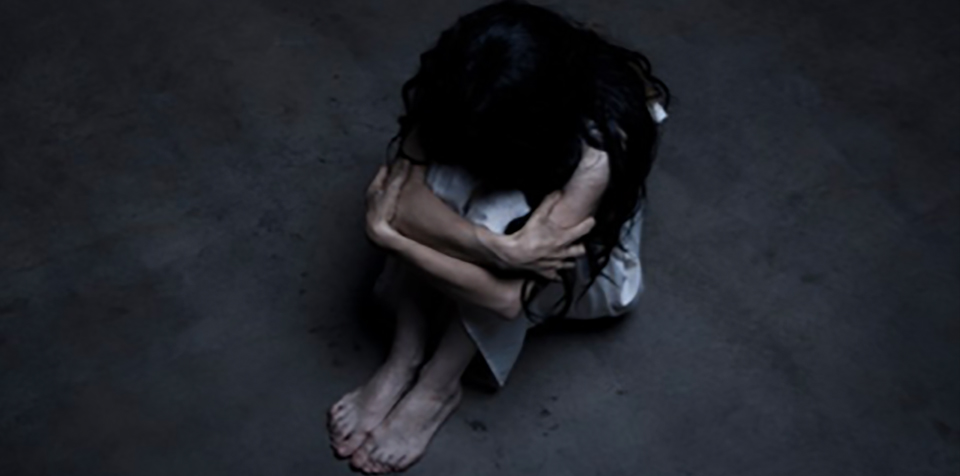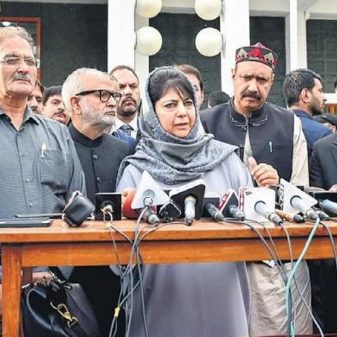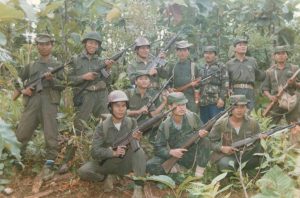
Ajailiu Niumai
Introduction Human trafficking is not only a modern day slavery but is a pathway to the total destruction of humanity. It is a situation where the trafficked victims were caged like birds and animals for making surplus gain in the capitalist market. Human trafficking not only bruises the body and mind of the victims, but it almost destroys them completely. The concept of human trafficking deals with an act of recruiting, transporting, transferring, harbouring or receiving a person through coercion, deception or abuse of vulnerability for the purpose of exploitation. Anyone can fall victim to human trafficking. The phenomenon of human trafficking is contingent with globalisation as it is a truly global occurrence with 127 countries as sources and 135 countries being the destination of the trafficked victims according to the United Nations (UNODC 2014). As unorganized illegal activity, human trafficking is the third most lucratic business after arms and drugs. When I lived in USA in 2013-14 (although I have been visiting various Universities across USA since 2006 onwards), I learnt that human trafficking has been rampant and the Federal Bureau of Investigation (FBI) finds it difficult to catch the traffickers. To my surprise, trafficking of girls and women seem to proliferate in mega cities like New York, Washington DC, California and Chicago. Similarly, human trafficking is rampant in Europe and the Middle East. When I delivered a special lecture on invitation on the topic “Human Trafficking about North East India” in December 2018 in the Department of Sociology, University of Tel Aviv, many scholars mentioned that trafficking is rampant in Israel too. A student in University of Tel Aviv from Nagaland discussed with me about his intention of conducting research among 3000 Nepalese care givers in Israel. I realised that Nepalese have been trafficked in various Middle Eastern countries by job recruiting agencies. It reminded me of the incident in February 2019, where around 179 Nepalese nationals were rescued in Imphal and Moreh while they were in transit to Myanmar and their destinations include the Middle East and West Asia. Smuggling of girls and women including boys and men to other states and abroad and then leaving them to their own devices are viewed as illegal. Any type of migration for labour through an agent is defined as coercive in international debate. In our everyday life, the difference is largely semantic. Girls, women and men migrated into another states and abroad for education, employment (labour) and marriage often fall prey to traffickers and the perpetrators of crimes end up victimising the trafficked victims. The conviction rate for the crimes committed by traffickers are low.
The most vulnerable people in the context of human trafficking are those minority tribes and communities with little social and legal protection. Majority of the trafficked victims are girls and women. Human trafficking in Manipur is different from the human trafficking in any other states. Since the past few years, Manipur emerged as a source and transit for human trafficking. The Department of Social Welfare, Government of Manipur reveals that hundreds of trafficked victims especially tribal girls and women including men from the hill districts of Manipur have been rescued. The trafficked survivor’s traumatic experiences are often silenced and disregarded with shame and stigma. Therefore, I attempted to examine the unspoken narratives of trafficked survivors from Manipur in order to examine their intersectional experiences.
Origin of interest in human trafficking
My research on human trafficking grew out of an accidental conversation with Mariam, a Naga woman at Tuhilal International Airport, Imphal, Manipur in June 2008. I was travelling to Hyderabad, where I work and live, after spending a summer holiday with my family in Manipur. Mariam said that her sister Jessica is traveling to Singapore to work as a housemaid for Indian diaspora household. Mariam seemed worried since Jessica had never travelled outside the country or flown before. Besides, Mariam and Jessica did not know anybody in Singapore. Jessica was going to an unknown country without any family members. This was the first time I had heard of Naga girl going abroad to work as housemaid, and it made me wonder if Jessica was being trafficked by job recruiting agency. Since I am involved occasionally in the repatriation of trafficked girls and women among the North East Indian community in Hyderabad, this incident caught my attention.
Doing fieldwork in unconventional situation
Doing fieldwork in human trafficking in Manipur is a high risk research where reliable data is not available easily. The critical challenge for the researcher is when the trafficked survivors and their family members are reluctant to share their stories openly. I conducted my empirical fieldwork in 2009 and continued it in 2013 in Manipur. To understand new trends of human trafficking, fieldwork was carried out again from 2017 to 2019. I conducted interviews with rescued survivors who had been trafficked to the metropolitan cities in India and abroad. I also conducted individual interviews with the State Child Protection Committee members, and Police Officers to get their perspectives on this critical issue and referred the local newspapers and websites to collect further information on tribal girls who had been trafficked within India and overseas.
Voluntary migration that leads to trafficking and exploitation
I found that an important structural instability in Manipur is the ever-changing nature of technology that leads to a cat and mouse game between the law enforcement authorities and the criminals leading to many gaps that are exploited by the traffickers. A few crucial aspects that emerge from my research are the voluntary participation of the trafficked victims, who
trust false promises, in the trafficking rackets; parents and relatives being loath to admit that their children and female relatives have been trafficked because of social stigma and shame. I found that trafficking is about the neglect of girls and women from marginalised tribes and communities from a state considered important only because of it’s strategic international geographical border in Myanmar.
Tribal parents and relatives do not question the intentions of the job recruiting agents, especially when they are local acquaintances, and even encourage their children to take advantage of the offers made by the agents. Ironically, agents who charge fees are the most trusted. When the agents charge fees, parents and other family members believe that they are genuine. Once their family members are gone, it is hard for the families to pursue the matter with the police even if they learn that their relatives are being exploited. Given the close-knit tribal society, rescued victims are reluctant to share their stories, fearing social stigma, and they attempt to hide their identity from strangers, including the researcher. The sociological framework of stigma is relevant in our understanding of re-integration of trafficked survivors with their families and society as it shed light on how they dealt with shame and social exclusion. Erving Goffman’s theory of stigma provided a better understanding of how trafficked survivors encountered multiple traumas due to stigmatization and finds it challenging to cope up in their everyday lives.
More than a dozen Liangmai Naga girls and boys were rescued from a shelter home in June 2009 from Andhra Pradesh by University of Hyderabad research scholars and Naga Christian Fellowship Pastor. The rescued children were promised free education with boarding facility by the local agents (couple). After reaching their destination, they were deceived and not provided nutritious food and quality education. The Andhra Pradesh Police officials raided the shelter home after a tip off and rescued the children. The police personnel and Naga youth accompanied these rescued children to their home state by train and re-integrated them with their respective families after counselling.
Another story of the Naga girl Joyce who worked in a popular spa in Hyderabad reveals a subtle form of deception, exploitation, trauma and shame that the trafficked survivors encounter in their everyday life. The police officials raided a popular spa in Hyderabad after a tip off of cross-massaging. The police rescued several Thai girls including girls from North East India in 2017 at Hyderabad. One of them is Joyce and a Meitei girl who was six months pregnant at that time. They were kept in Prajwala Shelter home (NGO) managed by Padma Shri Awardee Sunita Krishnan in Hyderabad for a couple of months. The NGO staff counselled them psychologically and provided their basic needs. After the court gave a clearance, Joyce was re-integrated with her family in early 2018 and the Meitei girl had a court marriage with her Muslim boyfriend who was her client in the spa. It reveals the pattern of deception and exploitation which traumatises the survivors.
In the context of violence, I would like to narrate a story of 18 year old Mary who was a victim of attempted rape in 2015. Mary’s sister is married to a driver of Central Reserve Police Force (CRPF) who hails from Karnakata. They live in a rented apartment in Banjara Hills, Hyderabad. Her sister had gone back home for delivery and left Mary with her husband to do domestic chores. In the meanwhile, Mary’s brother-in-law and his friend were intoxicated and wore mask and they attempted to rape her at midnight. She screamed and managed to run out of the apartment and her neighbours dialled the police and the two men were arrested. Mary was also kept in the police custody in the Children’s shelter home in Erragada, Hyderabad for four days. She was released from the shelter home by the Naga leaders. Pastor of the Naga Christian fellowship, Hyderabad, myself and a Rongmei Naga youth helped her to re-integrate with her family in her native village.
The above stories revealed that trafficked survivors were trafficked due to the poor economic situation and lack of opportunities in their respective villages and towns. The main objectives of the trafficked victims are to have a better life since they leave for education and for jobs.
Conclusion
I would like to conclude my advocacy for the creation of new opportunities for girls and women in villages and towns, establishment of quality and affordable educational institutions like schools and colleges, imparting the traditional understandings of family and kinship relations, promoting Naga traditional practices like music, art, weaving and handicraft, organic farming, horticulture, entrepreneurship and negotiate for market viability like the other dominant communities to curb human trafficking. We need to nurture and build the Naga village eco-system as self-sufficient. Lastly, I would like to recommend the village councils, churches, youth clubs and women associations to conduct massive awareness campaigns on human trafficking and set up Anti-Human Trafficking Youth Clubs in every village and town.
Notes: The names are anonymous in order to protect the identity of the trafficked survivors.
- Ajailiu Niumai is Professor of Sociology and Head, Centre for the Study of Social Exclusion & Inclusive Policy, University of Hyderabad (UoH), Hyderabad. She has served as the Assistant Professor, Department of Sociology in UoH from 2000-2009 & she is one of the pioneers in establishing the Centre for Women’s Studies, UoH in 2007. In 2013-14, she has served as the Visiting Fellow in University of Iowa, USA. She is the elected Member, Managing Committee of Indian Sociological Society (ISS) (2019-2025). She has served as Convenor of RC-04 Migration & Diaspora Studies of ISS (2016-2019). She has been an active member of the International Sociological Association. She is the National Resource Person for UGC Capacity Building of Women Managers in Higher Education. She has travelled to U.K, USA, Europe, Canada, the Middle East and South Asia to deliver Keynote address, invited lectures and Conference papers in various Universities.





